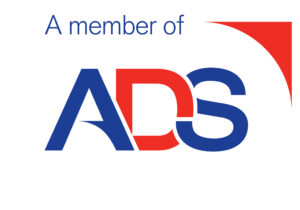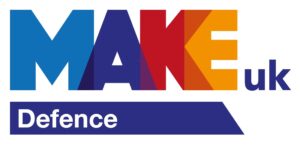Proelium Law LLP
INTERNATIONAL LAW OF THE SEA
The 1982 United Nations Convention on the Law of the Sea (UNCLOS) and its implementing agreements, Part XI of UNCLOS and the 1995 UN Fish Stocks Agreement, form a comprehensive legal regime for all maritime activities. UNCLOS has several key provisions. Firstly, it defines maritime zones such as the territorial, contiguous, and exclusive economic zones (EEZ) of all littoral states. Crucially, the convention also defines the right of navigation and passage. The conditional right to innocent passage for foreign ships in territorial waters is upheld and conditional rights of transit passage are also granted to all ships and aircraft through straits used for international navigation. UNCLOS also forms a basis for maritime peace and security, defining piracy, whilst also setting out a framework for littoral and flag states in relation to the exercising of criminal jurisdiction and cooperation against illicit activities. The convention also forms a framework for the protection, conservation and preservation of marine life, environments and resources.
UNCLOS also established two intergovernmental organisations: The International Seabed Authority and the International Tribunal for the Law of the Sea. The former is responsible for the regulation of activities carried out in the international seabed and ocean floor beyond any limits of national jurisdiction. The International Tribunal for the Law of the Sea is an independent judiciary body and has jurisdiction over any disputes concerning the interpretation or application of the UNCLOS.
Currently, 168 entities, including the EU, are party to the Convention. Non-parties include the landlocked central-Asian states, such as Tajikistan, but also Turkey and Venezuela. The US has signed the agreement but objected to the Convention based upon Part XI. However, it implements much of the Convention based on customary maritime law.
BUSINESS OVERVIEW
The importance of the Arabian Sea, and particularly the Strait of Hormuz, stems from their role as the singular sea line of communication (SLOC) from the major oil and gas producing nations of the Persian Gulf to the rest of the world. Around 3000 vessels traverse the Straights each day, including a small but crucial number of ultra and very large crude carriers (ULCC/VLCC). As such, the Sea and Strait are of critical importance for the energy security of a number of nations across the globe, especially the energy dependent nations of East Asia: around 80% of the oil that moves through the Sea is destined for the Asian markets. The Gulf Cooperation Council nations, except Oman, are also almost entirely dependent on the Straits for their hydrocarbon exports, which sustain their economic growth. In total 12% of total seaborne value passes through the Strait annually.
In particular, the Strait of Hormuz is the world’s most critical maritime energy chokepoint. At its narrowest point the Strait is 21 miles wide, but the width of the shipping lanes are just two miles wide, with a two-mile-wide buffer zone separating the two lanes. The Straits saw an oil flow of 18.5 million barrels per day (b/d) in 2016, which accounts for 30% of all maritime traded crude oil and petroleum products, and 20% of traded world oil. The Straits are also critical for the global trade in liquefied natural gas (LNG). In 2016, Qatar exported 3.7 trillion cubic feet of LNG through the Straits, which accounts for 30% of the global trade alone. Given these figures, any disruption to the flow of traffic through the Straits is likely to have a direct impact on the global economy through increases of hydrocarbon prices and supply disruptions of energy products. Bypass options do exist, in the form of three pipelines owned by Saudi Arabia and the UAE. Nevertheless, these pipelines only have a capacity of 6.6 million b/d, with a current unused capacity of 3.9 million b/d. As such, even at full capacity there would still be a significant shortfall in the flow of hydrocarbons out of the Persian Gulf if the Straits suffered a severe disruption.
The Arabian Sea’s waters and seabed is also home to an abundance of mineral and natural resources. Exploration of new oil and gas fields has begun offshore of Oman, and it is believed that Pakistan’s seabed may hold large reserves of natural gas. Furthermore, 40% and 24% of India’s crude oil and natural gas reserves, respectively, are located in the Arabian Sea, offshore of Western India. The Arabian Sea is also an important fishery, which feeds around 120 million people in its littoral states. Nevertheless, overfishing, severe pollution and warming oceans are significantly degrading the ecosystems of the Arabian Sea; the Sea has a dead zone the size of Texas, which is only increasing in size.
AREA OVERVIEW
The Arabian Sea is a marginal sea of the Indian Ocean, bounded by Iran and Pakistan to the north, India and the Maldives to the East and the Horn of Africa and Arabian Peninsula to the West. The Arabian Sea is connected to the Gulf of Oman, which via the Strait of Hormuz leads to the Persian Gulf, and to the Gulf of Aden which connects to the Red Sea via the Bab al-Mandeb.
The Arabian Sea has been an important maritime trade route throughout history. As such, a number of major commercial ports exist in the Sea’s littoral states, including Karachi and Gwadar in Pakistan, Mumbai in India, and the Port of Salalah in Oman. The sea is largely free from maritime disputes; however, some inevitably exist. India and Pakistan contest their border at Sir Creek, the seabed beyond which is rich in oil and gas.
Meanwhile, Iran and the UAE also contest the ownership of the strategic Abu Musa and Greater and Lesser Tunbs islands in the western Strait of Hormuz. Iran currently controls the islands, which the UAE view as occupied.
http://www.un.org/depts/los/convention_agreements/pamphlet_unclos_at_30.pdf; http://www.un.org/depts/los/convention_agreements/texts/unclos/unclos_e.pdf.
https://www.isa.org.jm/authority.
https://www.itlos.org/en/the-tribunal/.
https://pdfs.semanticscholar.org/9ba6/c8b2ad5a78bb30bd7741b87ea59823ef3a96.pdf.
https://www.eia.gov/beta/international/analysis_includes/special_topics/World_Oil_Transit_Chokepoints/wotc.pdf.
http://cimsec.org/waters-black-gold-strait-hormuz-pt-1/32390.
https://www.eia.gov/beta/international/analysis_includes/special_topics/World_Oil_Transit_Chokepoints/wotc.pdf.
https://www.eia.gov/todayinenergy/detail.php?id=32352; https://pdfs.semanticscholar.org/9ba6/c8b2ad5a78bb30bd7741b87ea59823ef3a96.pdf.
https://www.eia.gov/beta/international/analysis_includes/special_topics/World_Oil_Transit_Chokepoints/wotc.pdf.
https://www.eia.gov/beta/international/analysis_includes/special_topics/World_Oil_Transit_Chokepoints/wotc.pdf.
http://www.mospi.gov.in/sites/default/files/publication_reports/Energy_Statistics_2017r.pdf.pdf.
https://www.livescience.com/47752-arabian-sea-green-wave-runoff.html.
Names and Limits of Oceans and Seas, International Hydrographic Organisation, Special Publication No. 23 (2002), Chapter 5.
https://www.uae-embassy.org/about-uae/foreign-policy/occupied-uae-islands.
Need advice?If you’d like further information, or to discuss working with us, you can get in touch via our Contact Us page





